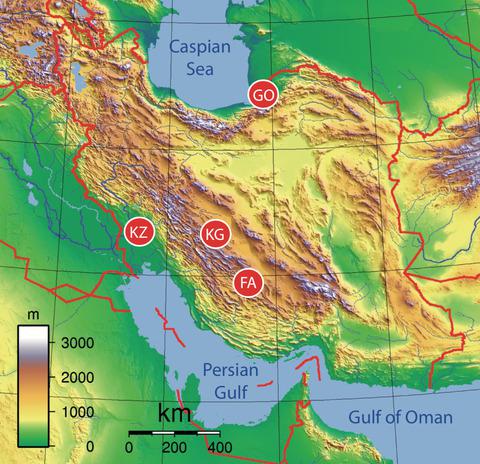当前位置:
X-MOL 学术
›
Plant Pathol.
›
论文详情
Our official English website, www.x-mol.net, welcomes your feedback! (Note: you will need to create a separate account there.)
SnToxA, SnTox1, and SnTox3 originated in Parastagonospora nodorum in the Fertile Crescent
Plant Pathology ( IF 2.7 ) Pub Date : 2020-07-12 , DOI: 10.1111/ppa.13233 Fariba Ghaderi 1 , Bahram Sharifnabi 1 , Mohammad Javan‐Nikkhah 2 , Patrick C. Brunner 3 , Bruce A. McDonald 3
Plant Pathology ( IF 2.7 ) Pub Date : 2020-07-12 , DOI: 10.1111/ppa.13233 Fariba Ghaderi 1 , Bahram Sharifnabi 1 , Mohammad Javan‐Nikkhah 2 , Patrick C. Brunner 3 , Bruce A. McDonald 3
Affiliation

|
The centre of origin of the globally distributed wheat pathogen Parastagonospora nodorum has remained uncertain because only a small number of isolates from the Fertile Crescent were included in earlier population genetic and phylogeographic studies. We isolated and genetically analysed 193 P. nodorum strains from three naturally infected wheat fields distributed across Iran using 11 neutral microsatellite loci. Compared to previous studies that included populations from North America, Europe, Africa, Australia, and China, the populations from Iran had the highest genetic diversity globally and also exhibited greater population structure over smaller spatial scales, patterns typically associated with the centre of origin of a species. Genes encoding the necrotrophic effectors SnToxA, SnTox1, and SnTox3 were found at a high frequency in the Iranian population. By sequencing 96 randomly chosen Iranian strains, we detected new alleles for all three effector genes. Analysis of allele diversity showed that all three effector genes had higher diversity in Iran than in any population included in previous studies, with Iran acting as a hub for the effector diversity that was found in other global populations. Taken together, these findings support the hypothesis that P. nodorum originated either within or nearby the Fertile Crescent with a genome that already encoded all three necrotrophic effectors during its emergence as a pathogen on wheat. Our findings also suggest that P. nodorum was the original source of the ToxA genes discovered in the wheat pathogens Phaeosphaeria avenaria f. sp. tritici 1, Pyrenophora tritici‐repentis, and Bipolaris sorokiniana.
更新日期:2020-07-12


























 京公网安备 11010802027423号
京公网安备 11010802027423号